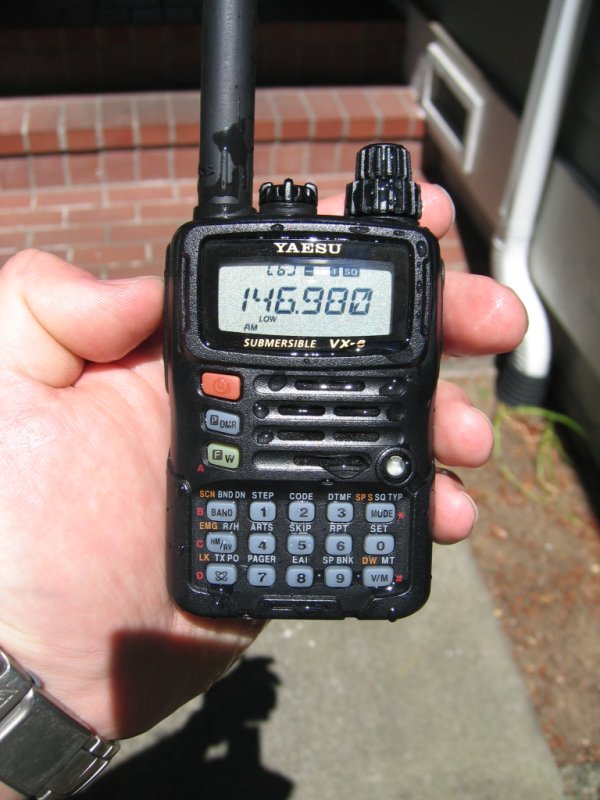rlown wrote:OK.. let's make this simple.
When in the Sierra, what gear do you carry and what repeaters are you trying to hit when you do? What does it weigh? thanks for the map pointers, but..
Ah, lets see....
Here's the hand held radio I will sometimes carry -

Not my photo by the way, but it gives you an idea of the typical size of the radio. The weight is 9 oz., akin to carrying a camera.
Just to clarify, a repeater is normally atop a mountain or elevated structure. It's purpose is to relay signals by receiving on one frequency and then simultaneously re-transmitting the signal on another frequency. In this way. the ham operator on the lower terrain benefits greatly by virtue of the signal being transmitted from the higher elevation to other ham radio operators.
For example there is a mountain east of Bishop named Silver Peak at about 10,850 ft ASL. Using a hand held radio as shown above, I could be standing in Lone Pine and speak to another ham standing in Mammoth by virtue of the greatly elevated repeater. Using the hand held radios without the repeater, the communication would not be possible (this is a bit of an extreme example as most repeaters are on lower mountains, but you get the idea).
To make things more interesting, many ham repeaters are "linked", connecting multiple repeaters together to extend the coverage and range.
Some hikers on the PCT carry radios knowing in advance that many repeaters are within range from certain locations (here's an example for California:
http://www.qsl.net/aa6j/pct/calif.htm" onclick="window.open(this.href);return false;).
A few other examples -
- I've been up to Lake Ediza and could communicate via the repeater on Mammoth Mountain
- Communicated via the above mentioned Silver Peak repeater while on Hurd Peak
- There's a repeater that covers the Yosemite Valley and environs
- Where I live, on the central coast, the area is saturated with repeaters so nearly any local hike into the Las Padres is covered by one or more repeaters.
Hand held radios also provide point to point communication, similar to an FRS radio. The difference is that the ham rigs are usually of much better quality and have more power, affording better back country "where are you now" communication. I've heard that hang glider pilots like to get their ham license and use ham radio for these same reasons.
As you can see, I could go on and on. As fate has it, I have a couple of hilltop repeaters myself - here's birds eye view of one located on the south east corner of San Luis Obispo count at about 4000ASL.


